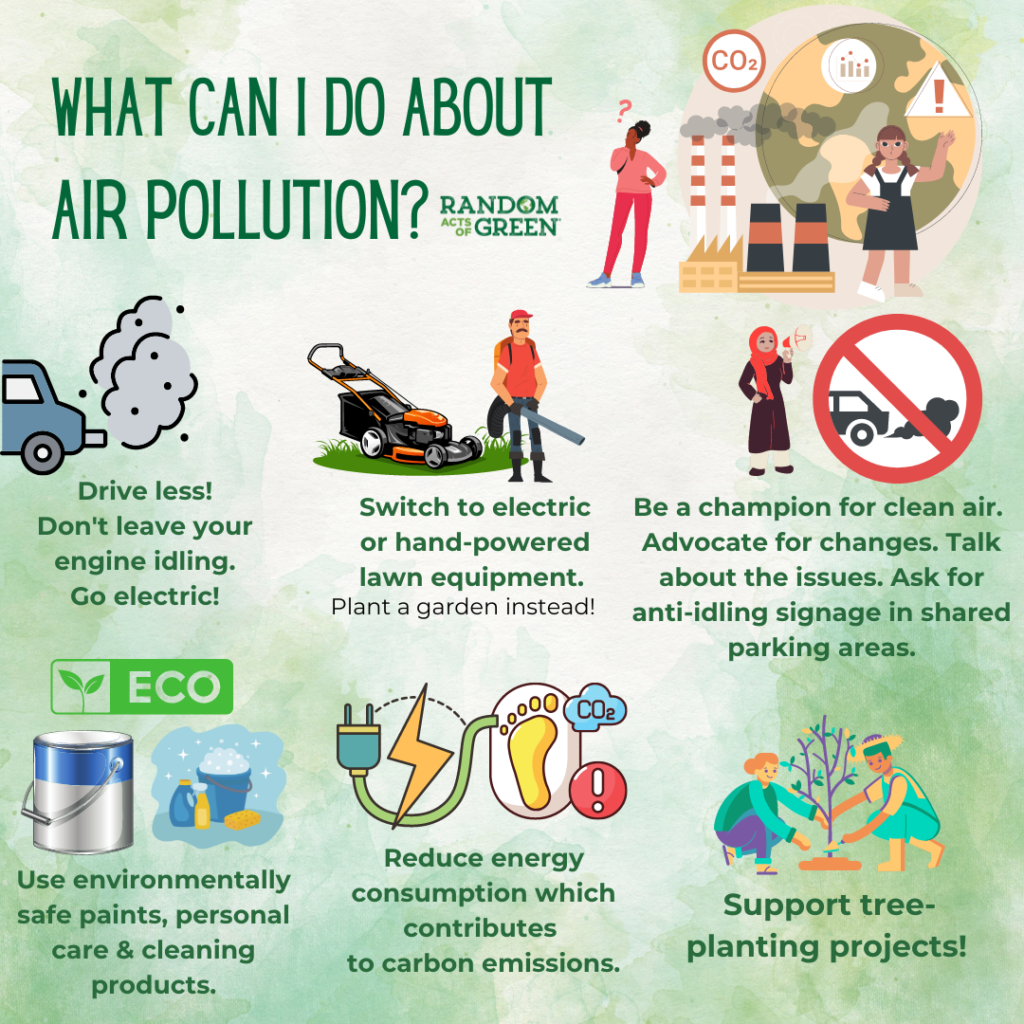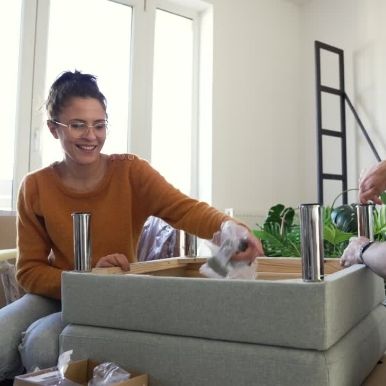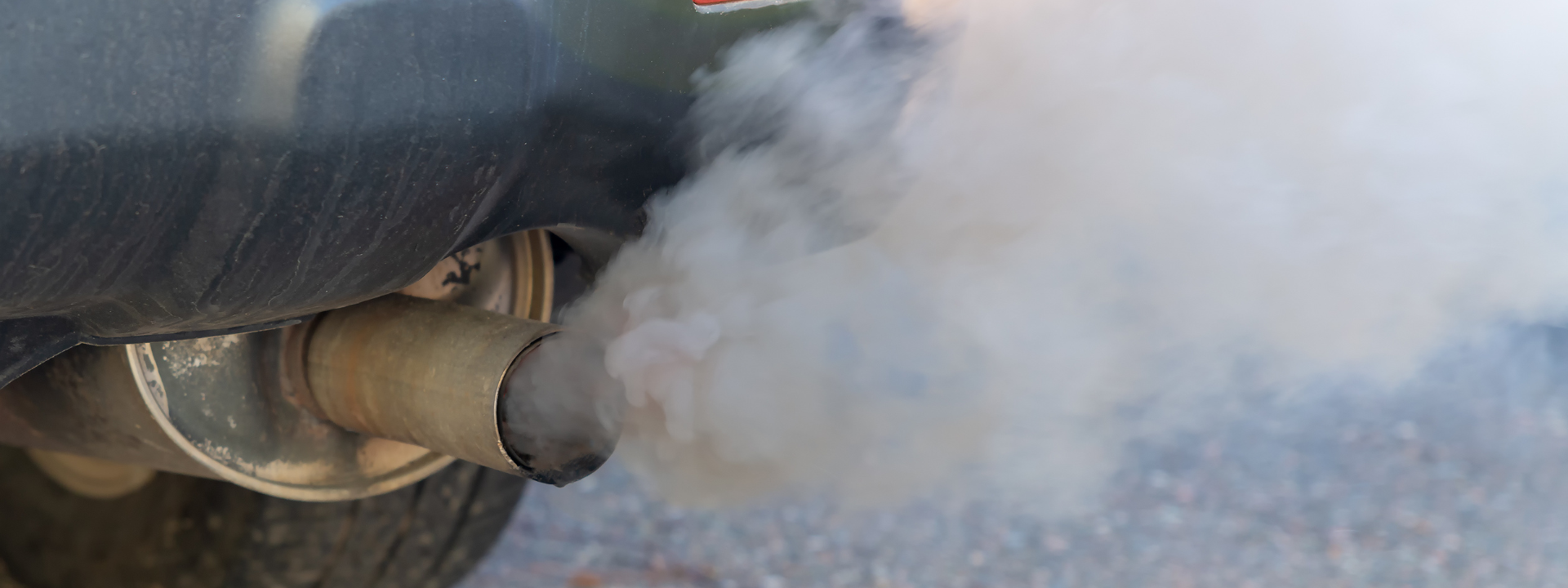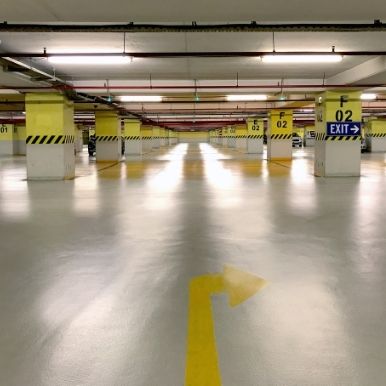Fume-Free February

“Walking into a modern building can sometimes be compared to placing your head inside a plastic bag that is filled with toxic fumes."
John Bower Founder, Healthy House Institute
Most of the time, when we hear air pollution, we think about massive visible pollution expelling from transportation and manufacturing.
Did you know that the air in your living room, bedroom or kitchen could be five times worse than the air outdoors?
Did you know the indoor air quality in enclosed parking garages can be 25 to 100 times more polluted than outside air?
This is especially concerning when you consider that most people typically spend up to 90% of their time each day indoors.
While we may not reach ‘fume-free’ status, that doesn’t mean we shouldn’t try. Read on to explore different sources of indoor air pollution you may not have considered as well as ways you can take action!
Sources of Indoor Air Pollution
Enclosed Spaces Lacking Air Flow
New Furnishings Off-gassing
Off–gassing occurs when manufactured goods release volatile organic compounds (VOCs) into the air after unboxing as the chemicals dissipate.
Your brand new carpet, couch or sideboard can be the culprit. Chemicals such as benzene, ethylene glycol or formaldehyde get into the air from our furnishings. Shockingly, manufacturers don’t have to state what chemicals they use.
The EPA singles out engineered wood — particleboard — as being particularly prone to emitting formaldehyde, a probable carcinogen.

Health impacts include headaches, respiratory illnesses, hormone disruption, and a variety of cancers.
A great way to avoid ‘off gassing’ from your furniture is to buy vintage or second-hand pieces. This works because off-gassing lessens over time.
You can also double-check that the pieces you buy match today’s safety standards. For example: Furniture painted before 1978 may have been painted using lead paint.
And know that products like glass and stainless steel don’t ‘off-gas’.
Connected Garages
Is your garage connected to your house? Then never idle your car or use any gas-emitting appliances in the garage!
Those toxic fumes will be whistling their way under doors and through vents into your home.
Not only is this incredibly dangerous for the people inside, it’s also a waste of gasoline (did you know that idling for ten seconds or more uses more fuel than restarting your car?).
Read our blog post, “How long should I idle my car this winter?” where we breakdown some idling myths.

Indoor Parkades
Do you live in a skyrise or apartment complex with underground parking or an attached parkade?
These spaces are the biggest culprits for toxic indoor air.
Neglecting a parkade’s indoor air quality exposes occupants to potentially life-threatening fume levels.
Owners, property managers, and condo boards risk legal and financial liability that can cost them millions of dollars in class-action lawsuits.
Meet An Indoor Air Quality Expert
➡️ You Can Improve Indoor Air Quality with Specialist Groups: Like Gasonic Group Inc.
Headquartered in Calgary, Alberta, Gasonic helps measure indoor air quality in various buildings with highly trained technicians and exceptional monitoring technology.
Their Inmosphere Consulting service offers a comprehensive, integrated solution that goes beyond traditional indoor environmental quality through their multi-disciplinary approach.
“We pride ourselves in offering our clients the lowest incident rates in the industry. If you rely on clean air to keep your people safe, you can rely on us for the most dependable, cost-efficient solutions.”
How Building managers Can Help Reduce Pollution in Parkades, according to the experts at Gasonic Group Inc.
#1. Check and optimize your ventilation system:
Most buildings have their fan set to start at 25 PPM of carbon monoxide. We recommend implementing a lower trigger level to ensure cleaner air.
#2. Upgrade your CO detectors and monitors.
#3. Run a professional air quality audit.
#4. Educate your building residents on the hazards of idling.
Signs are a great start, but you should go one step beyond by leveraging your indoor communications – with posters and newsletters!
Send them this blog post: “How to Convince Your Building Occupants to Stop Idling” by Gasonic.
#5. Paint your parkade with air-purifying paint.
#6. Support zero-emission vehicles by installing charging stations.
Poor Air Quality Health Impacts
“Poor indoor air quality can cause or contribute to the development of infections, lung cancer and chronic lung diseases such as asthma.”
American Lung Association
That’s right — poor indoor air quality is one of the top five health risks facing Canadians.
Before this article, had you considered if your college, condo building or office tests its indoor air quality? Do they even consider it?
It’s a really important conversation and one that isn’t had too often.
With the average North American spending 90% of their time indoors, it’s important that we are living and breathing in a safe space.
Remember, poor indoor air quality can:
- Impact student or employee attendance, comfort and performance.
- Accelerate the deterioration and reduce the efficiency of physical plants and equipment.
- Increase potential for building closures or relocation of occupants.
- Strain relationships among team members and colleagues.
- Create negative publicity.
- Impact community trust.
- Create liability problems.
As always, we encourage you to ask questions and talk to your building or property manager. And consider how you monitor your household’s indoor air!









